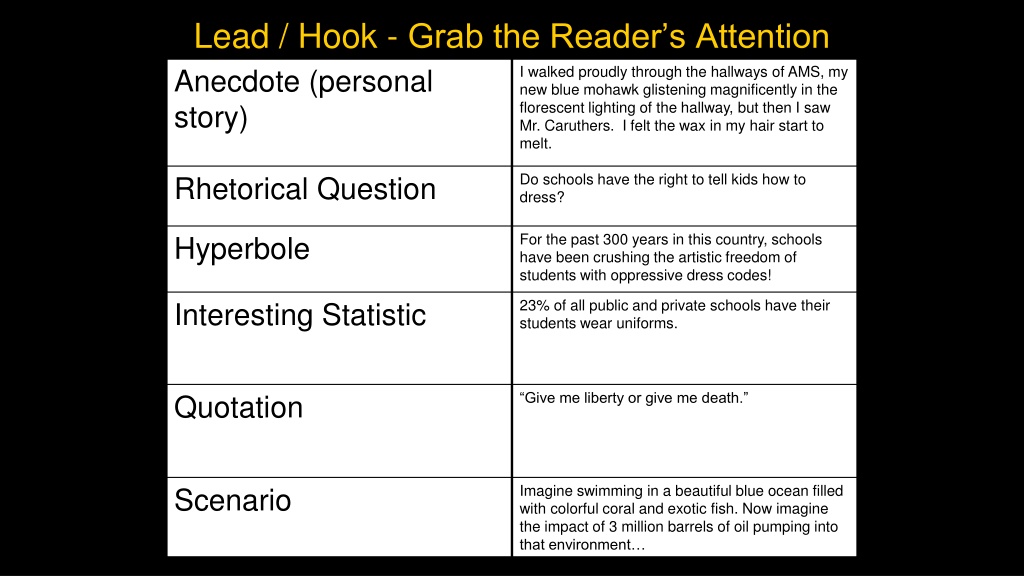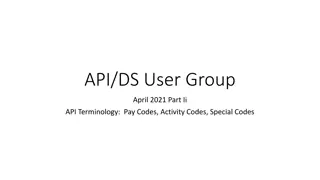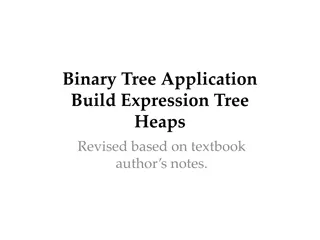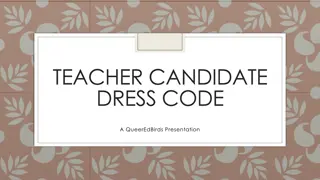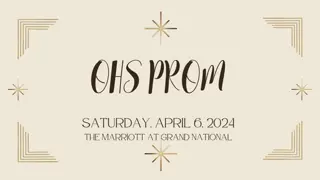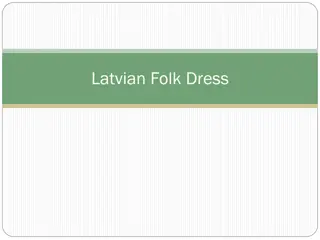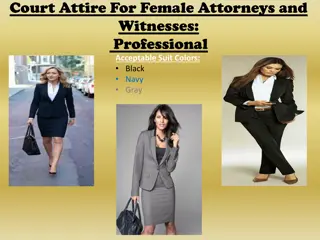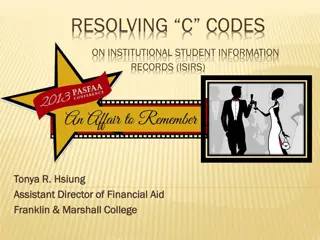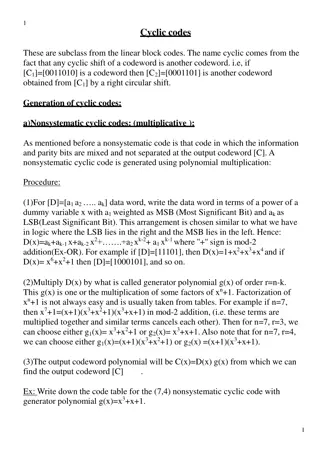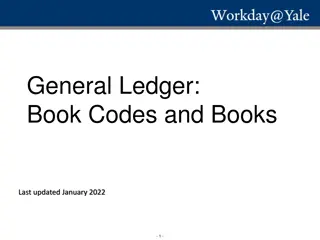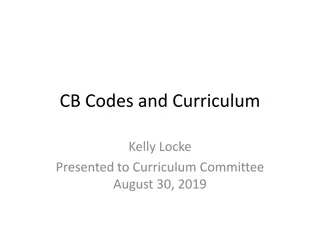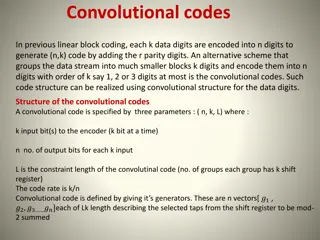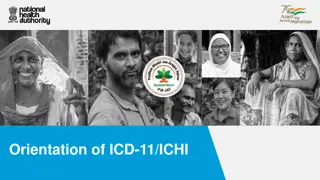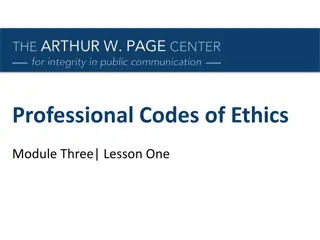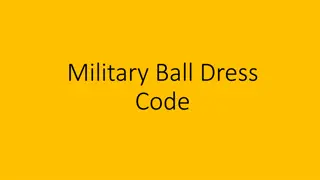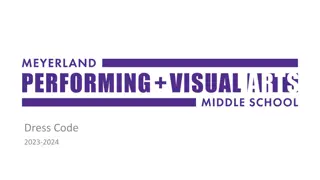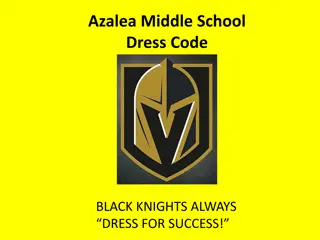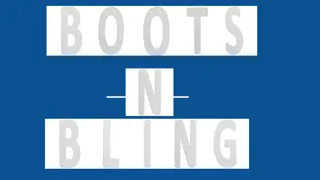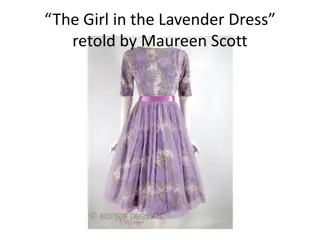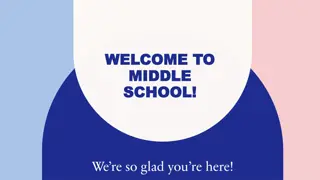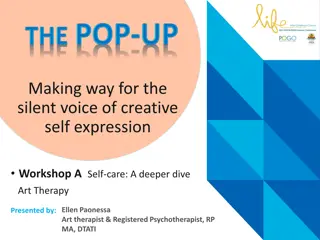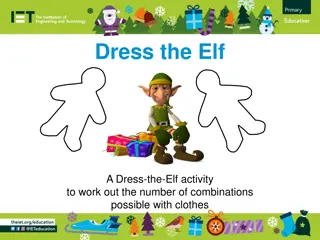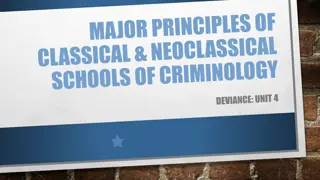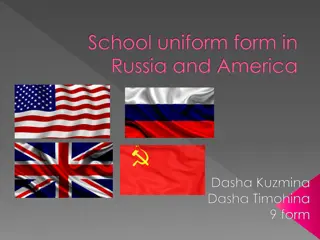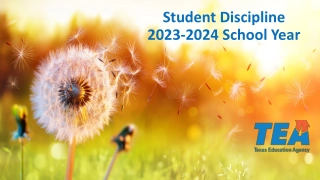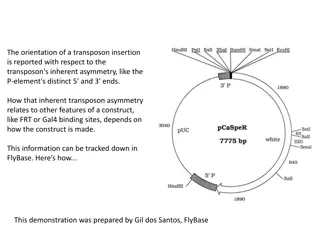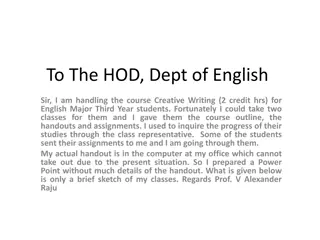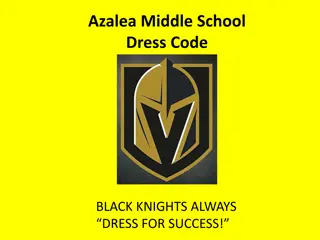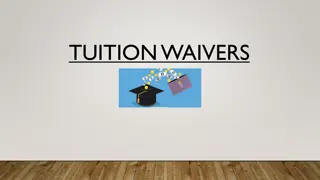Exploring the Impact of Dress Codes on Creative Expression in Schools
Uncover the longstanding battle between schools and students' artistic freedom through the lens of dress codes. Delve into the statistics, scenarios, and figurative language presented to question the suppression of self-expression. See how writers paint intricate characters and how issues, like kneeling in sports, unfold layers of understanding. Discover the cause-and-effect aspects within these dynamics.
Download Presentation

Please find below an Image/Link to download the presentation.
The content on the website is provided AS IS for your information and personal use only. It may not be sold, licensed, or shared on other websites without obtaining consent from the author. Download presentation by click this link. If you encounter any issues during the download, it is possible that the publisher has removed the file from their server.
E N D
Presentation Transcript
Lead / Hook - Grab the Readers Attention Anecdote (personal story) I walked proudly through the hallways of AMS, my new blue mohawk glistening magnificently in the florescent lighting of the hallway, but then I saw Mr. Caruthers. I felt the wax in my hair start to melt. Do schools have the right to tell kids how to dress? Rhetorical Question For the past 300 years in this country, schools have been crushing the artistic freedom of students with oppressive dress codes! Hyperbole 23% of all public and private schools have their students wear uniforms. Interesting Statistic Quotation Give me liberty or give me death. Imagine swimming in a beautiful blue ocean filled with colorful coral and exotic fish. Now imagine the impact of 3 million barrels of oil pumping into that environment Scenario
Using Figurative Language Using Figurative Language Begin with a simile, metaphor, personification, or hyperbole. Hook: Writers are artists; they start with a blank canvas and paint characters with their words. Clincher: By using direct and indirect characterization, writers can create masterpieces.
Hook: Writing is like an onion; it consists of many layers. Clincher: Writing about an issue can have many layers; some may be biased and others may not. Hook: Imagine attending your first professional football game. While the people stand for the national anthem, you are surprised to see one of your favorite players kneeling instead. Clincher: At the next football game you attend, you may not be surprised to see even more players kneeling.
Give More Information Give an Example Cause and Effect Relationship In addition Additionally In fact Moreover Also Together with Equally important Similarly For example, For instance, Specifically, To demonstrate, To illustrate, Notably, Due to ______, For For the reason that ______, Since ______, then ____ Consequently If then As a result Compare or Contrast Add Emphasis To Conclude Although However In comparison Likewise On the other hand Above all, Even more, More importantly, Therefore Furthermore Altogether Overall Finally
